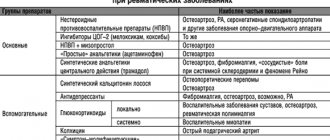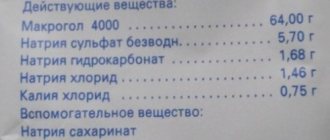Magnesium is one of the important and irreplaceable elements for the human body. The drug Magnerot normalizes the functioning of the cells and muscles of the heart and participates in the regulation of its contractions.
In stressful situations, large amounts of magnesium are released from the body, resulting in an increased need for additional magnesium intake to combat stress.
In what cases should it be used?
Most often, the medicine is prescribed for chronic heart failure and arrhythmia, which is associated with a lack of salts and magnesium in the human body. The drug repels spastic manifestations and does not allow the development of atherosclerosis.
Indications for use may be greater due to the presence of diseases of the digestive system, when magnesium in food is not absorbed in the stomach, or conditions that require a high content of the active component. These conditions include:
- period of bearing a child;
- chronic alcoholism;
- prolonged physical inactivity;
- prolonged depression.
Instructions for use MAGNEROT® (MAGNEROT)
Magnesium is a macronutrient. Necessary for many energy processes, participates in the metabolism of proteins, fats, carbohydrates and nucleic acids.
Magnesium takes part in the process of neuromuscular excitation, inhibiting neuromuscular transmission. Magnesium is of particular interest as a natural physiological calcium antagonist. Magnesium controls the normal functioning of myocardial cells and is involved in the regulation of myocardial contractile function. In stressful situations, an increased amount of free ionized magnesium is excreted, and therefore the additional amount of magnesium helps to increase resistance to stress.
Magnesium deficiency leads to neuromuscular disorders (motor and sensory hyperexcitability, convulsions, paresthesia), mental changes (depression, confusion and hallucinations), cardiovascular diseases (ventricular extrasystole, tachycardia, increased sensitivity to cardiac glycosides). Magnesium deficiency during pregnancy increases the likelihood of toxicosis and premature birth.
Magnesium is one of the essential minerals needed by all living cells. Magnesium is a cofactor for about 300 enzymes, incl. associated with the transfer of phosphate groups, with all reactions requiring ATP, as well as at all stages of replication and reading of the genetic code. Magnesium is also necessary for cellular metabolism, incl. glycolysis and oxidative phosphorylation. Magnesium is important for membrane stabilization, nerve conduction, calcium channel activity, and ion transport.
Depending on the severity, magnesium deficiency invariably causes secondary electrolyte imbalances (hypocalcemia, loss of intracellular potassium, and sodium and calcium oversaturation), which explains the occurrence of clinical symptoms such as impaired muscle function (neuromuscular disorders, cramps). It has been experimentally established that a lack of magnesium leads to a deficiency of potassium, while a simultaneous lack of magnesium increases the loss of potassium in cells due to a lack of potassium. Potassium replenishment is inhibited in the presence of uncorrected magnesium deficiency.
Salts of orotic acid are involved in the metabolic process. In addition, orotic acid salts are necessary for the fixation of magnesium on ATP in the cell and the manifestation of its action. Orotic acid is a key intermediate in the biosynthetic pathway of pyrimidine metabolism and, accordingly, a component of all living cells. At high metabolic demands, orotic acid is included in the pathway for the synthesis of pyrimidine nucleotides, which are necessary for RNA synthesis, and, accordingly, for RNA-dependent synthesis of proteins and phospholipids. In addition, the production of glycogen and ATP is stimulated. By synthesizing energy-rich phosphates, orotate can improve the energy status of hypoxic cells.
How to take Magnerot
The drug must be taken orally. To enhance the effectiveness of taking it, you need to take the tablet 1 hour before meals. The tablet should be taken with a sufficient amount of purified water. The duration of therapy depends on the patient’s condition and is determined only by a specialist. But there is also a general treatment plan. Initially, you need to take 2 tablets 3 times a day for 7 days. Then reduce to 1 tablet at a time. You can take a maximum of 6 tablets per day. In the absence of contraindications, the drug can be used for a long time.
For night cramps, Magnerot is also prescribed. At night you need to take up to 3 tablets at a time.
The effect of therapy with Magnerot on cardialgia in postmenopausal women
At the age of 50–55 years, when estrogen levels rapidly decrease, in women the incidence of arterial hypertension and cardialgia doubles. It is believed that 90% of cardialgia are caused by three main reasons: ischemic heart disease, vertebrogenic-muscular pathology and psychovegetative disorders. Since stress tests usually do not reveal myocardial ischemia, and coronary angiography - stenotic lesions of the arteries, as a rule, there are no signs of gross musculoskeletal pathology, pain is most often regarded as a manifestation of neurocirculatory dystonia or psychovegetative syndrome [3, 8, 10]. At the same time, it is known that estrogens have a significant effect on vascular tone, stimulating the formation of nitric oxide (NO) by the endothelium and preventing the action of angiotensin II on the vascular wall. This suggested that the occurrence of endothelial dysfunction and vasomotor disorders against the background of estrogen deficiency may be one of the causes of pain in the chest [9, 11, 14]. This concept is supported by the fact that in some cardialgia, endothelial dysfunction is detected with a very high frequency. The causative role of hypoestrogenemia is confirmed by the high effectiveness of hormone replacement therapy.
However, quite often one has to deal with a negative attitude towards the use of hormone replacement therapy (HRT), both from patients and from doctors. In addition, their use is often hampered by the presence of contraindications. This makes it urgent to search for other approaches to the treatment of cardialgia. One way may be to use the drug Magnerot, which has a mild antispasmodic effect and a beneficial effect on the psycho-vegetative status.
The purpose of the study was to study the effect of the drug Magnerot on the dynamics of cardialgia, psycho-vegetative status and endothelial dysfunction in postmenopausal women.
We examined 32 women (average age 53.3 ± 1.2 years), the duration of postmenopause was 4.0 ± 1.0 years. All patients had climacteric syndrome, in most cases of moderate severity (Cooperman index was 28.4 ± 2.3 points).
Chest pain was assessed using a visual analogue scale and a questionnaire, which took into account: the nature of the pain, localization, conditions of occurrence and relief. All women underwent: treadmill test, information load test, cold test, and hyperventilation test.
The photoplethysmogram of the fingers was recorded on an Ultra PVD device (AMP, USA) both at rest and during information-stress, cold, and hyperventilation tests. The results were assessed by changes in the amplitude of the photoplethysmogram (APPG).
To study the vasomotor function of the endothelium, we used Doppler scanning of the brachial artery using an Acuson Sequoia-512 device (Japan) with high-resolution ultrasound at rest and during reactive hyperemia after 3-minute clamping of the brachial vessels with a cuff. An increase in the diameter of the artery by 10% or more was considered normal during the test with reactive hyperemia.
The severity of autonomic dysfunction was assessed using a standardized questionnaire [2].
Anxiety and depressive disorders were assessed using the standardized Beck scales for depression and the Spielberger–Hanin scales for anxiety.
To assess the antithrombogenic function of the endothelium, we conducted a platelet aggregation study using the GV Born method in the O'Brien modification, induced by ristomycin at a concentration of 0.5 mg/ml, before and after the cuff test. The difference in platelet aggregation indicators (D%) was calculated using the formula: X, D% = (X (PM) - X (ref.) x 100%, where X (PM) is the platelet aggregation indicator after the cuff test; X (ref.) — initial indicator of platelet aggregation.The results of platelet hemostasis were compared with the data of the control group (12 postmenopausal women, whose average age was 55.4 ± 1.4 years, without cardialgia, with normal vasomotor function of the endothelium).
All women received the drug Magnerot according to the following regimen: 1 week - 2 tablets. 3 times a day, then - 1 tablet. 3 times a day. Treatment was carried out for 3 months. Health status was monitored monthly; instrumental examinations were carried out initially and after 3 months of Magnerot therapy.
The results were processed by the method of variation statistics with data presented in the form of an average value and its standard deviation (M ± m). The significance of the differences was assessed using the Student's test.
The results of the study revealed that in 5 (15.6%) women the pain was localized behind the sternum, had a compressive nature and lasted up to 10 minutes. In 27 (84.4%) women, chest pain was of a pressing, aching nature; the patients experienced a feeling of discomfort and complained of stabbing pain to the left of the sternum, lasting from 10 to 30 minutes. According to the visual analogue scale, chest pain was of moderate intensity (38.1 ± 5.64%, according to VAS).
Pain was provoked mainly (78%) by psycho-emotional factors and did not have a clear connection with physical activity.
6 (18.8%) women had severe weather dependence of cardialgia. All women had no positive effect from taking nitrates. In most patients, pain was accompanied by a feeling of lack of air (28.2%); palpitations (15.6%); sweating (21.9%); decreased mood and fatigue (15.6%); numbness and chilliness of the limbs (18.7%).
When performing a stress test (treadmill test), all women achieved a submaximal heart rate, at which no diagnostically significant ST segment depression was detected.
ST segment depression was not detected during information load, cold and hyperventilation tests.
In the ultrasound reaction of the brachial artery to compression of the shoulder with a cuff, 9 (28.1%) patients had a normal reaction (increase in its diameter by 15.5 ± 1.6%), 23 (71.9%) had a pathological reaction: 11 (34.4%) insufficient expansion (Dd < 10%); 7 (21.9%) had no response to the cuff test (Dd = 0%); in 5 (15.6%) patients there was narrowing of the artery (angiospasm).
When comparing the nature of the pain syndrome in the chest and the reaction of the brachial artery to the cuff test, compressive pain was noted in all 5 (15.6%) women with vasospasm (narrowing of the artery), while in case of inadequate expansion (less than 10%), the pain was predominantly of a pressing nature . Women with normal brachial artery response experienced chest discomfort, aching and stabbing pain.
All patients initially had a decrease in the amplitude of the photoplethysmogram of the fingers by 5.8 ± 0.7 mm (in the control group - 8.1 ± 0.5 mm), indicating a decrease in pulse blood flow in the subcutaneous arterioles.
A study of mental status revealed an increase in the levels of reactive (48.9 ± 2.4) and personal anxiety (53.5 ± 2.2); all patients had depression: mild in 11 (34.4%), moderate in 19 (59.3%) and severe in 2 (6.3%). All women had signs of autonomic dysfunction (average score - 39.8 ± 2.9).
During treatment with Magnerot, the well-being of all patients improved significantly. First of all, it should be noted that there was a significant improvement in the mental status of women within the first month. By the end of the 3rd month, the indicator of reactive anxiety decreased from 48.9 ± 2.4 to 35.5 ± 2.2; personal anxiety - from 48.9 ± 2.4 to 43.7 ± 0.8; depression - from 10.5 ± 1.4 to 5.1 ± 0.2 (p < 0.01).
The manifestations of menopausal syndrome decreased: the Cooperman index by the end of the 3rd month decreased to 16 ± 2.1 points.
The severity of autonomic dysfunction (initial average score - 28.7 ± 2.9) decreased within the first month of Magnerot therapy, and by the end of the 3rd month of treatment these changes reached a significant level (average score - 19.4 ± 1.9; p < 0.01).
Subjective improvement in condition at the end of the first month was also manifested in the form of a decrease in the severity of pain in the chest (decrease in the VAS score to 22.7 ± 3.0), and by the end of the 3rd month of therapy with Magnerot, complete elimination of pain in the chest was noted.
After 3 months of therapy with Magnerot, all women with a previously impaired response of the brachial artery to the cuff test experienced an increase in its diameter by more than 10% (table), which indicates restoration of the vasomotor function of the endothelium. A tendency towards a decrease in ristomycin-induced platelet aggregation in response to the cuff test can also be considered as evidence of restoration of the functional state of the endothelium: before occlusion - 7.4 ± 1.0%; after occlusion - 7.2 ± 1.1% (D% = - 2.7).
The reaction of microvessels to tests that provoke their spasm has significantly improved. The PPG amplitude increased significantly during the cold test (9.4 ± 0.8 mm; p < 0.01). The PPG amplitude increased compared to the initial one and during the information load (6.7 ± 0.8 mm) and hyperventilation (6.85 ± 0.7 mm) tests, but this difference did not reach a statistically significant level.
Thus, we can conclude that with the onset of postmenopause in women, the frequency of chest pain increases significantly, the interpretation of which is often difficult. The cause of cardialgia can be dysfunction of the autonomic nervous system [2], spasm of the coronary arteries [4] or microcirculation disorders [8].
In recent years, much attention has been paid in the literature to endothelial dysfunction as a possible cause of chest pain in postmenopausal women [11, 14]. At the same time, the connection between chest pain and endothelial dysfunction has not been sufficiently studied.
In all women with cardialgia of a compressive and pressing nature, we detected a decrease in the amplitude of the photoplethysmogram of the fingers, reflecting the pulse blood flow in the subcutaneous arterioles. When conducting cold and hyperventilation tests that provoke vasospasm, an additional, significantly more pronounced decrease in PPG amplitude was noted than in the control group. These changes can be considered as evidence of increased vascular tone and their hyperreactivity to constricting stimuli. When performing a test with reactive hyperemia (cuff test), a violation of the vascular reaction was also determined, manifested in insufficient expansion of the brachial artery, and in 5 women even its narrowing. This vascular reaction is generally considered to be a manifestation of endothelial dysfunction. The impairment of endothelial function in these patients is also indicated by an increase in ristomycin-induced platelet aggregation in response to clamping of the arm vessels with a cuff. The relationship between platelet hemostasis indicators and disturbances in the vasomotor response to the cuff test was noted by us earlier in other studies [7, 9].
All women were noted to have anxiety, depression, and autonomic dysfunction.
While taking the drug Magnerot, within 1 month the severity of pain, according to VAS, decreased from 38.1 to 22.7%, and by the end of the 3rd month the pain completely stopped.
Along with the regression of pain, there was a decrease in the severity of anxiety and depression, autonomic dysfunction and a significant improvement in well-being.
Clinical improvement was accompanied by restoration of endothelium-dependent vasodilation: after 3 months, the increase in arterial diameter was at least 12%. The amplitude of the photoplethysmogram of the fingers also increased, and its response to vasoconstrictor stimuli became the same as in the control group.
Against the background of restoration of the vasomotor function of the endothelium, a decrease in ristomycin-induced platelet aggregation in response to the cuff test was observed, which also indicated normalization of endothelial function.
The results obtained indicate a beneficial complex effect of the drug Magnerot both on psychovegetative disorders and on the functional state of the vasomotor function of the endothelium, which helps eliminate cardialgia. Our data fully coincide with the positive results of other studies [6, 13, 15].
Thus, in postmenopausal women with cardialgia, in the absence of indications for hormone replacement therapy (or the presence of contraindications), the appointment of Magnerot can be considered as pathogenetic therapy.
The use of this drug in women is of particular interest, since magnesium therapy can also significantly reduce the manifestations of premenstrual syndrome and primary dysmenorrhea, and the participation of magnesium in the formation and maintenance of bone mass may be important for the prevention of postmenopausal osteoporosis [1, 5, 6].
In the future, given the urgency of improving treatment methods for functional disorders in peri- and postmenopause, we consider it appropriate to conduct a larger randomized controlled trial.
Literature
- Belakovsky M. S. Calcium and human need for it // Nutrition issues. - 1999. - No. 6. - P. 4–8.
- Autonomic disorders. Clinic, diagnosis, treatment / Ed. A. M. Veina. - M., Medical Information Agency, 1998. - P. 53–57.
- Neurology for general practitioners. Ed. A. M. Veina. - M.: Eydoe Media, 2002.
- Gogin E. E., Gruzdev A. K., Lazarev I. A. et al. Variants of unstable angina in the light of modern ideas about the mechanisms of endothelial damage // Therapeutic Archive. - 1999. - No. 4. — 21–28.
- Zlatopolska E. Pathophysiology of calcium, magnesium and phosphorus metabolism. - M. Medicine, 1987. - 217–278.
- Zoltan PA et al. Premenstrual syndrome // Journal of Hungarian gynecologists. - 2003 No. 66. - P. 217–221.
- Ezhovskaya I. G., Vinogradova I. V. The effect of dipyridamole on platelet aggregation caused by von Willebrand factor in patients with intermittent claudication. Thrombosis, hemorrhage, DIC syndrome. Treatment problems. - M., 2000. - 69–70.
- Karpov R. S., Pavlyukova E. N., Taranov S. V. et al. Syndrome X: clinical, functional and morphological study // Cardiology. - 1999. - No. 8. - P. 19–26.
- Kirichenko A. A., Panchuk L. N., Novichkova Yu. N., Vinogradova I. V., Zubkova L. V. Comprehensive assessment of the vasomotor function of the endothelium and ristomycin-induced platelet aggregation in women with chest pain suffering from arterial hypertension, postmenopause // Regional blood circulation and microcirculation. - 2003. - No. 3(7). — P. 44-49.
- Rudakova T.P. Features of coronary heart disease in women. New St. Petersburg Medical Gazette. - 2000. - No. 1. — P. 47–50.
- Sergienko V. B., Sayutina E. V., Samoilenko L. E. et al. The role of endothelial dysfunction in the development of myocardial ischemia in patients with coronary heart disease with unchanged and slightly changed coronary arteries // Cardiology. - 1999. - No. 1 - P. 25_30.
- Born G., Schwartz C. (Ed.) Vascular Endothelium. Stuttgart. —1997.
- De Souza MC et al. A synergistic effect of a daily supplement for 1 month of magnesium for relief of anxiety-related premenstrual symptoms: a randomized, double blind, crossover study. - J Womens Health 2000, 9: 131–139.
- Quyyumi AA, Cannon ROIII, Panza JA et al. Endothelial dysfunction in patients with chest pain and normal coronary arteries. Circulation 1992; 86:1864–1871.
- Walker A. et al. Magnesium supplementation alleviates premenstrual symptoms of fluid retention. - J Womens Health 1998, 7,1157–1165.
A. A. Kirichenko , Doctor of Medical Sciences, Professor O. N. Flegentova Yu. N. Novichkova , Candidate of Medical Sciences, Associate Professor I. V. Vinogradova , Candidate of Medical Sciences A. A. Ryazantsev , Candidate of Medical Sciences K. V. Yurchenko RMAPO, Central Design Bureau No. 1 of JSC Russian Railways, Moscow
Side effects
The medicine in tablet form is well absorbed by the body, but if you neglect the established treatment regimen and regularly exceed the dose, then unwanted reactions may occur. They may manifest as stomach upsets. In this case, you need to reduce the dose and expect relief.
In practice, there are cases when urticaria, skin itching and rash appeared after taking it. If such manifestations occur, you need to contact a specialist who will adjust the treatment regimen.
Overdose
If the dose is exceeded, magnesium intoxication may occur. With normal kidney function, such a problem is almost impossible. Excess of the substance can lead to the following conditions:
- gag reflex, diarrhea, pain in the abdomen;
- paralysis of the respiratory muscles;
- violation of the patency of the stomach and bile ducts.
To cope with such conditions, you need to consume as much potassium as possible. It is also necessary to take in as much water as possible.
Overdose of the drug Magnerot, symptoms and treatment
The manifestations of the described adverse reactions may increase. With full renal function, magnesium intoxication rarely occurs. With magnesium intoxication, symptoms from the central nervous system (nausea, vomiting, bladder obstruction, constipation, paralysis of the respiratory system) and cardiac symptoms (deterioration of atrioventricular conduction and excitation from the ventricles), as well as a curare-like effect on neuromuscular conduction are noted. Magnesium intoxication is treated with intravenous calcium (100–200 mg Ca2+). Additionally, hemodialysis, peritoneal dialysis and artificial respiration may be needed.
special instructions
The drug can be stored for 5 years from the date of manufacture. Should be kept in a dry place at room temperature away from children.
The medicine should not be used in parallel with sodium fluoride and iron salts. The combination of Magnerot with tranquilizers and sedatives enhances their effect on the body.
The medication can be purchased at a pharmacy. No doctor's prescription required. On average, the medicine costs 380-500 rubles.
The drug and its analogues do not in any way affect the ability to drive a vehicle or operate other mechanisms that require increased attention.
Is it possible to take Magnerot during pregnancy?
From an objective point of view, the drug can be prescribed to women during pregnancy. But even a slight excess of the dosage can cause serious consequences, including miscarriage. Therefore, Magnerot can be taken only as prescribed by a doctor, if the expected benefit significantly outweighs the possible danger to the baby.
Reviews from pregnant women indicate that if the treatment regimen is followed, the drug is well tolerated by the body.
Some experts prescribe the drug for severe swelling, increased blood pressure, and tremors in the arms and legs. For edema, magnesium can be given to pregnant women at 4-8 months. The medicine also improves uterine blood flow, which has a positive effect on the condition of the pregnant woman.
Which is better: Magnesium B6 or Magnerot
A direct analogue of Magnerot is Magnesium B6. Both drugs have a similar effect on the body, but their structure is different.
The Magnerot medication contains exclusively magnesium compounds, while Magna B6 contains pyridoxine. The action of the drugs is aimed at replenishing the lack of magnesium in the body. Magne B6 cannot be classified as a cheap analogue.
If you have heart disease, high blood pressure, migraines, or excessive sweating, it is better to take Magnerot, since this medicine is aimed specifically at treating problems with the heart and blood vessels.
Cheaper but effective analogues include: Magnelis B6, Vitrum mag. The latter drug replenishes not only the lack of magnesium in the body, but also calcium.
Special instructions for the use of the drug Magnerot
Magnerot can be used for a long time in conditions associated with magnesium deficiency. It should be taken into account that magnesium deficiency in the body can be caused by diseases of the gastrointestinal tract, consumption of foods with reduced magnesium content, chronic alcoholism (due to decreased resorption of magnesium in the renal tubules and increased excretion of magnesium from the body), taking certain medications ( oral contraceptives, diuretics, muscle relaxants, glucocorticoids, insulin), conditions that require increased magnesium intake (physical inactivity, stress, sports, pregnancy). With simultaneous treatment with iron preparations, tetracycline, sodium fluoride, the interval between taking magnesium preparations and these drugs should be 2-3 hours. The use of the drug during pregnancy and breastfeeding is possible, since during this period the need for magnesium increases significantly. If its content in the body is not balanced, it can lead to serious complications for both mother and child.







